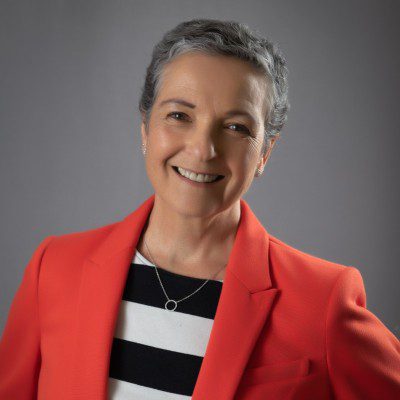Transportation Troubleshooting: How NEVI Will Jumpstart Growth of U.S. Electric Vehicle Charging Networks

Everyone in the U.S. transportation industry is excited about NEVI—or they should be.
Enacted with the 2021 Bipartisan Infrastructure Law, the National Electric Vehicle Infrastructure (NEVI) Formula Program commits $5 billion to subsidize electric vehicle (EV) charging stations and build the charging networks needed to drive our transition to electric vehicles.
Yes, the big challenges have just begun in implementing NEVI: vendors and supply chains may struggle to keep up with NEVI-funded demand for charging equipment; grid upgrades will be needed in some rural regions; and there’s a thorny issue to work out with competing plug-in connector standards.
But my colleagues who work with states, utilities, transit agencies and other organizations on transport electrification are enthusiastic and optimistic about NEVI.
“NEVI is incredibly important to our electrification journey,” says Dana Lowell, director of WSP USA’s Center for Clean Transportation and National Zero Emission senior technical advisor. “It will jumpstart the development of a nationwide network of charging infrastructure, and that’s what’s needed to ease prospective EV buyers’ anxiety about being stranded with an empty battery.”
Lowell and his team praise the Federal Highway Administration (FHWA) and U.S. Department of Transportation (USDOT) for designing NEVI rules in smart and efficient ways. For example, the funding supports 80 percent of capital costs and subsidizes operational costs for five years, with a 97-percent uptime requirement to ensure chargers will always be available.
Setting the EV Charging Standard
Charging stations must be, at most, 50 miles apart and no more than one mile from a highway exit or intersection to create a comprehensive and convenient system to support inter- and intra-state travel.
“Fast, casual restaurants right off the highways and existing fueling stations will be ideal locations,” adds Lowell. “We’ve been seeing interest from BP, Shell, Love’s and others for some time, and NEVI funding should accelerate that market development.”
One ideal type of location—interstate highway rest areas—currently is not allowed under federal law.
“This stems from the original development of the interstate highway system, with policies to encourage competition among private landowners and convenience stores,” explains Philip Jonat, WSP vice president for Energy, Northeast. “It’s unfortunate, because we often hear at public meetings that rest areas would be ideal locations.”
Each station will have at least four 150 kilowatt (kW) direct current fast chargers (DCFCs), which allow charging two- to three-times faster than many existing DCFCs and will go a long way to ensure a charger will always be available when an EV driver pulls up.
“Most light-duty EVs can charge from 20-30 percent charge to 95 percent within a half-hour,” notes Lowell.
By summer 2022, every U.S. state had submitted its NEVI spending plans to FHWA. Funding was committed for the federal fiscal year 2022 (ending Sept. 30, 2022), and states have been given estimates of how much they’ll receive through FY2026. “We’re now starting to see requests for proposals (RFPs) being issued by the states for actual projects,” adds Lowell.
Seven states have RFPs out for projects: Colorado, Kansas, Kentucky, Maine, Ohio, Rhode Island and Pennsylvania. All are asking for project proposals that meet minimum NEVI standards and a few other state requirements. They also are seeking private companies to set up chargers on private property. No states are looking to own the electric vehicle supply equipment.
Handling the Load
As vendors and contractors respond to these RFPs, we expect some hangups with supply chains. The FHWA has eased the pressure for the first year of the NEVI buildout by granting a one-year waiver from the BIL’s “Buy American” requirements, but it’s uncertain whether that will be renewed.
One oft-discussed concern—the need for grid upgrades to handle EV charging—will not likely be a roadblock for NEVI except in some rural regions.
“For NEVI, we’re talking about charging stations spaced about 50 miles apart, each with loads of around 600kW,” says Jonat. “For each station, that’s equivalent to a mid-sized retail store, and very few electric utilities will have trouble accommodating that load.”
A significant hurdle is the competition between three plug-in systems for DCFC: CHAdeMO, CCS and Tesla’s North American Charging Standard (NACS).
After digesting public comments, FHWA ruled in February 2023 that NEVI charging ports must be CCS-compatible. Recently, Ford, GM and Rivian announced new and existing EVs will be equipped to use NACS chargers.
“While this makes business sense given that Tesla owns 85 percent of the existing fast chargers in the United States, it will add costs and prolong the confusion about charging standards,” says Lowell. “Also, virtually all medium- and heavy-duty vehicles now use the CCS standard, and it would be good to have one standard shared by all vehicle classes.”
Ultimately, NEVI is just a down payment—although invaluable—on what we’ll ultimately need to electrify transport. Lowell and his team estimate that to reach 70-percent EV penetration, the United States will need at least six times as many chargers as NEVI will provide. But it’s certainly an encouraging start.
About Paula Hammond
Paula Hammond is senior vice president and national multimodal market leader, WSP USA; email: [email protected].


